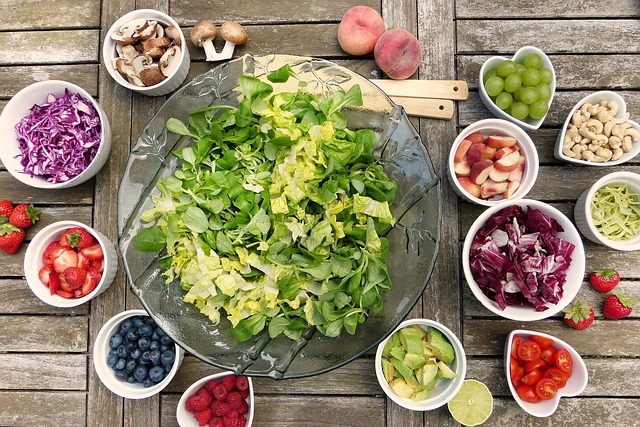The New Year is a great time to make healthy changes – start the year off with a new attitude, pledge to get more activity, eat better or do something to better yourself. Since we spend all day talking about cancer, we decided to kick off the new year with the goal of helping you learn about cancer risk and what you can do to reduce your risk. This blog series will focus on some common risk factors and attempt to bust some myths and help you see ways to improve your health and reduce your cancer risk. In part 3 we will look at diet and how this contributes to cancer risk.

We’ve all heard a report on TV that eating more (insert some food) reduces cancer risk. Wouldn’t that be great- broccoli at every meal would do the trick? It isn’t nearly so simple. Experts feel that a plant-based diet –that is one that high in vegetables, fruits, whole grains and beans – MAY reduce cancer risk. More likely, a healthy diet works in combination with two other very important pieces of the prevention puzzle – maintaining a healthy weight and getting regular exercise. These 3 things work together in a prevention triangle. Make adjustments to one and you may very well have an effect on another.
When it comes to diet, phytochemicals are important. These compounds are naturally found in vegetables and fruits, giving them color, smell and flavor. But once these compounds enter our bodies, they do lots of things to help us stay healthy. This includes:
- Stimulating our immune system.
- Blocking harmful substances we eat, drink or breathe from becoming carcinogens (cancer causing substances).
- Reducing inflammation (which is known to promote cancer growth).
- Improving the health of our cells (reducing damage and triggering damaged cells to die).
- Helping to regulate hormones.
Eating a variety of different color vegetables and fruits provides a variety of these healthy compounds. It is also important to understand that our bodies are best able to do this when we get these compounds from their natural food source.That means eating carrots for carotenoids, not taking them in a pill form.
Making changes to your diet can be hard. There are lots of excuses- I’m too busy, I hate to cook, there was nothing healthy at the cafeteria. Start slow- make one change a week. Maybe your big downfall is during the workday. Next thing you know it is 130 and you haven’t had lunch. Now you are starving and grab whatever is around. Make a plan to pack your lunch. Make a big batch of salad, soup or something healthy on Sunday and pack it in individual containers to easily grab on your way out the door in the morning. If dinner is the downfall, look for slow cooker recipes, prepare things on Sunday for the week, make a menu for the week and stick to it.
These are big changes- don’t be too hard on yourself if you fall of the wagon! Just hop right back on and focus on your successes. Tie this all in with our challenge to #GetMoving and you are well on your way to reducing your cancer risk- and your risk of many other health issues! Learn more about cancer risk and diet on OncoLink.

Want to learn more about your risk factors and reducing your cancer risk? Take the Reduce My Risk survey!
Carolyn Vachani is an oncology advanced practice nurse and the Managing Editor at OncoLink. She has worked in many areas of oncology including BMT, clinical research, radiation therapy and staff development. She serves as the project leader in the development and maintenance of the OncoLife Survivorship Care Plan and has a strong interest in oncology survivorship care. She enjoys discussing just about any cancer topic, as well as gardening, cooking and, of course, her sons.
Nice blog, information you provided on understanding cancer risk. Was really helpful.Thanks for sharing with us.